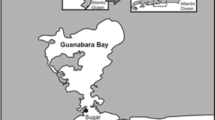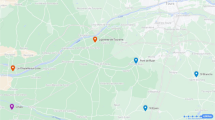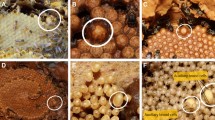Summary
Four fitness traits, including fecundity, hatchability, duration of oviposition, and longevity, were studied in T. urticae. Comparisons were made between unfertilized and fertilized females reared on good and poor resources. Significant differences in total egg production, duration of oviposition, and longevity were observed with respect to fertilization status. Only total egg production varied significantly between maternal background environments. Hatchability was uniformly high. Fecundity was found to be the most influential character affecting fitness in spider mites. Further analysis of the distribution of daily egg productions was used to determine the various factors affecting intrinsic rates of increase including the rate of development, time of peak egg production, and duration of oviposition. The rate of development was shown to be the most important factor determining the intrinsic rate of increase. The relationships between these findings and the colonizing ability of spider mite populations were discussed.
Similar content being viewed by others
References
Boudreaux, H. B.: The effect of relative humidity on egg-laying, hatching, and survival in various spider mites. J. Insect Physiol. 58, 65–72 (1958)
Boudreaux, H. B.: Concerning sex determination in tetranychid mites. Proc. 2nd Int. Congr. Acarology 1967, 485–490 (1969)
Helle, W., Overmeer, W. P. J.: Variability in tetranchyid mites. Ann. Rev. Entomol. 18, 97–120 (1973)
Hussey, N. W., Parr, W. J.: Dispersal of the glasshouse red spider mite, Tetranychus urticae. Koch. Entomol. Exp. Appl. 6, 207–214 (1963)
Laing, J. E.: Life history and life table of Tetranychus urticae Koch. Acarologia 11, 32–42 (1969)
Lewontin, R. C.: Selection for colonizing ability. In: H. G. Baker, G. Ledyard Stebbins, eds., The genetics of colonizing species, p 77–91. New York: Academic Press 1965
Li, J. C. R.: Statistical inference I, 658 pp. Ann Arbor, Michigan: Edwards Brothers 1964
Mitchell, R.: Growth and population dynamics of a spider mite (Tetranychus urticae K.). Ecology 54, 1349–1355 (1973)
Overmeer, W. P. J., Harrison, R. A.: Notes on the control of the sex ratio in populations of the two-spotted spider mite, Tetranychus urticae Koch (Acarina: Tetranychidae). N. Z. J. Sci. 12, 920–928 (1969)
Author information
Authors and Affiliations
Rights and permissions
About this article
Cite this article
Wrensch, D.L., Young, S.S.Y. Effects of quality of resource and fertilization status on some fitness traits in the two-spotted spider mite, Tetranychus urticae Koch. Oecologia 18, 259–267 (1975). https://doi.org/10.1007/BF00345850
Received:
Issue Date:
DOI: https://doi.org/10.1007/BF00345850




